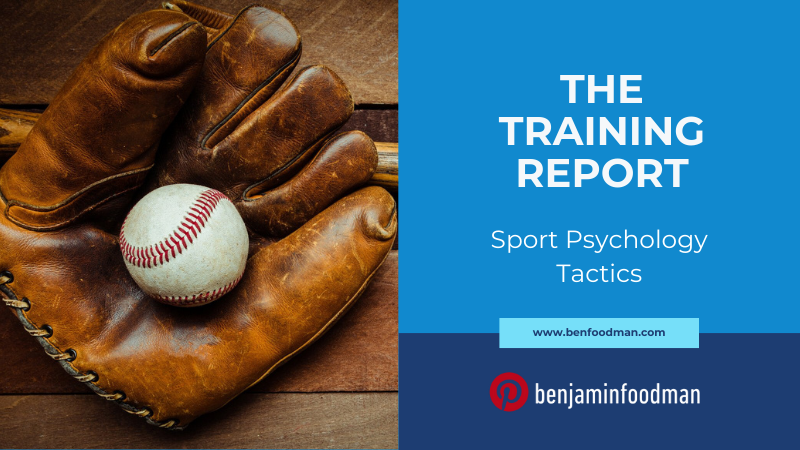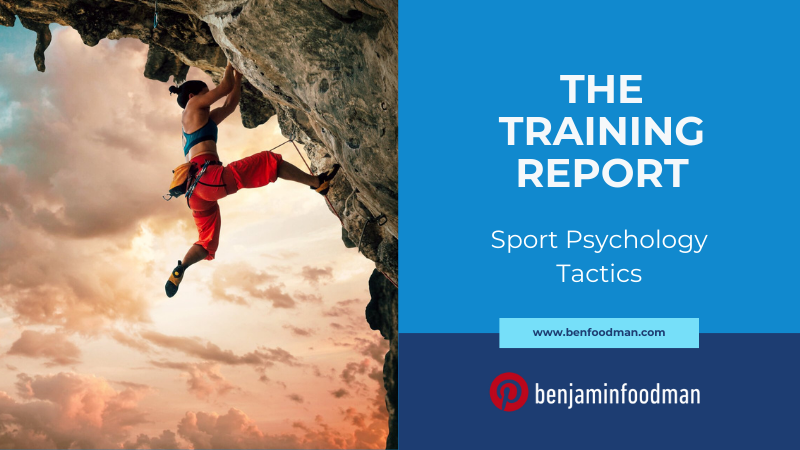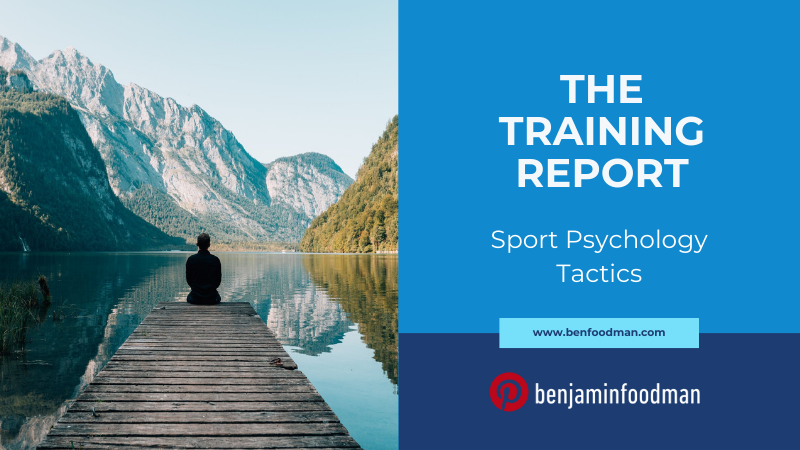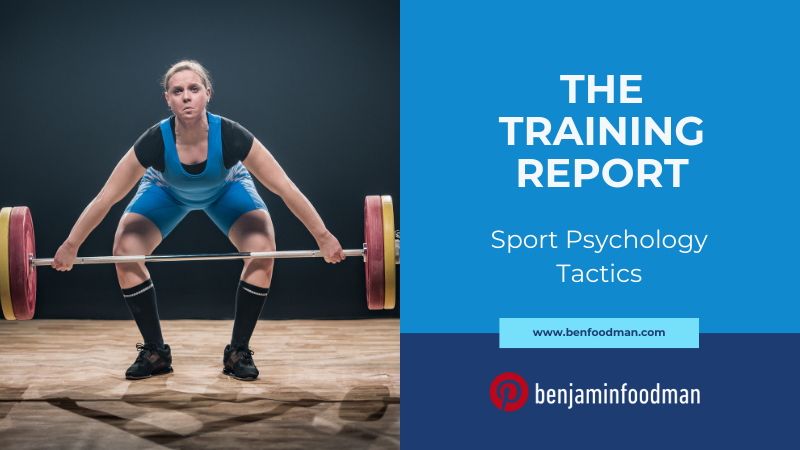Sport Psychology Tactics - Sports Injuries, The Yips, Mental Blocks & Brainspotting
About the Author
Ben Foodman is a licensed psychotherapist & performance specialist. He owns his private practice located in Charlotte North Carolina where he specializes in working with athletes to help them overcome mental blocks (the yips), PTSD, ADD / ADHD and achieve flow states through the techniques of Brainspotting & Neurofeedback. If you are interested in services, use the link here! Enjoy the article below!
Introduction: What Are The Yips & How Does Sports Psychology Help
When athletes experience sport-related injuries, they are often shuttled through an entire industry that is exclusively focused on providing physical rehabilitation services. Athletes usually expect that they will speak with a doctor, a physical therapist, and maybe chiropractor or a strength coach. The entire industry is completely dedicated towards addressing the location of the physical injury. In the book Bodymind by Ken Dychtwald, the author concisely illustrates this issue by discussing the barriers that continue to keep us from effectively treating sports injuries: Here in the West, we have chosen to make a duality of the bodymind, separating it into two parts: the psyche, which is considered to live somewhere in the skull between the eyes; and the body, which lives and moves beneath it. This mind/body dualism is reflected in all of our institutions and cultural processes. By intellectually dividing ourselves into parts, we encourage intensive specialization and differentiation in all our activities, thereby further encouraging mind/body separatism rather than holism. Because of this split, it is not surprising to find that our minds and bodies often compete and argue, for they lack integration.
Unfortunately for the majority of athletes that go through a traditional injury rehabilitation process, they will almost never be asked about the psychological aspects of their injury, let alone receive adequate care for this part of the issue. Most doctors and physical therapists will cite how there is no example of successful integration of mental health services into injury rehabilitation, or even worse will dismiss the psychological aspect of sport injury as ‘not-real’ and will refer out to mental health clinicians who have no training background to deal with this issue. Often times many athletes will continue to experience moderate to chronic pain symptoms for the remainder of their careers and will receive little help to address this issue. For today’s Training Report, I want to explore the complexities of this topic by first exploring neuroscience of sport-injury related trauma, how trauma and mental blocks manifest in the body through these injuries, and how to effectively treat these issues using Brainspotting. Let’s begin by exploring the neuroscience of this problem.
Part I. Neuroscience Of Sports Trauma & The Yips
When people think of sports, many individuals view the majority of these events as experiences not serious enough to cause trauma. But the reality is that all sports are problem solving experiences meant to induce psychological and physical stress upon participants. Trauma in its’ simplest definition is considered to be a deeply distressing and/or disturbing experience. This combination of stress places the athlete in prime position to experience many of the symptoms that we have come to learn are associated with psychological trauma. I have previously discussed the neuropsychological mechanisms of trauma, but it is important to review the November 2021 Training Report excerpt that examines what is actually happening in an athlete’s brain when these events occur:
When we experience a traumatic event (such as a sport-related injury) that surpasses our individual stress threshold, our reptilian brain becomes highly responsive to the stress event. In the book The Body Keeps The Score, author Dr. Bessel Van Der Kolk beautifully illustrates how the brain functions during a trauma event, ‘the emotional brain has first dibs on interpreting incoming information. Sensory information about the environment and body state received by the eyes, ears, touch, kinesthetic sense, etc. converges on the thalamus where it is processed and then passed on to the amygdala to interpret its emotional significance. This occurs with lightning speed. If a threat is detected the amygdala sends messages to the hypothalamus to secrete stress hormones to defend against that threat. The neuroscientist Joseph LeDoux calls this the low road. The second neural pathway, the high road, runs from the thalamus via the hippocampus and anterior cingulate, to the prefrontal cortex, the rational brain, for a conscious and much more refined interpretation. This takes several microseconds longer. If the interpretation of threat by the amygdala is too intense, and/or the filtering system from the higher areas of the brain are too weak, as often happens in PTSD, people lose control over automatic emergency response, like prolonged startle or aggressive outbursts.’ The previous excerpt concisely summarizes what the brain experiences during a traumatic event, but it is important to discuss how the body plays a significant role in this process.
Part II. The Body Keeps The Score & The Yips
A common experience that athletes will report is that they are usually continuing to deal with some form of pain even after they have completed injury rehabilitation. Even if they attend a follow up appointment, they are usually told that this is ‘normal’ and are frequently encouraged to ‘toughen up’ as they continue their training. What many doctors, physical therapists and even mental health clinicians fail to consider is that this pain is very real and is most likely a PTSD-like response from the body. In the same way the subcortical brain has humans produce panic attack behaviors when they are in the presence of a triggering memory, the body will also produce muscle guarding reflexes if it senses that a similar injury experience can occur. This is in fact a natural defense mechanism attempting to help the individual from re-injuring themselves.
As previously mentioned, many coaches, doctors and physical therapists view athlete pain as ‘mental’ (with the underlying assumption that the pain is not real) and that the athlete’s behavior is illogical. But let’s revisit a key excerpt from The Body Keeps The Score that disproves this viewpoint: However, neuroscience research shows that very few psychological problems are the result of defects in understanding; most originate in pressures from deeper regions in the brain that drive our perception and attention. When the alarm bell of the emotional brain keeps signaling that you are in danger, no amount of insight will silence it. When our emotional and rational brains are in conflict, a tug of war ensues. This war is largely played out in the theater of visceral experience, your gut, your heart, your lungs will lead to both physical discomfort and psychological misery”. To continue to assume that a physical injury is somehow separate from a psychological injury is no longer a scientifically acceptable answer. In fact when we look at neuroscience research that focuses on changes to the body due to trauma, we see that there can be significant physical changes to the brain, and that neuropathways associated with pain become highly activated. We even have extensive research that shows how the body makes intimate changes to itself by creating maladaptive movement patterns meant to guard the physical location of the injury. Essentially, post injury related recurring pain is a type of stored trauma that needs to be processed.
To further understand this issue from a sports perspective we can turn to the book This Is Your Brain On Sports by David Grand. The author goes into great detail to explain the neuroscience behind the Yips and how these defense mechanisms that the body creates is connected to stress from sports-related injuries and events: ‘In parallel fashion, the brain attempts to always move toward a state of psychological equilibrium. Over the course of our lives, we are exposed to a variety of life experiences, some positive, some neutral, and some negative. Through a natural assimilation process, the brain adaptively processes these experiences so they are constructively integrated. What is useful from the experience is learned and stored in the brain with the appropriate emotion and is available for future use. When an experience is successfully assimilated or digested it is stored in the brain with little attached intense emotion or physical sensation. When we recall such an incident, we don’t reexperience the old emotion or sensation with it. In this way we are informed by our past experiences and memories but not controlled by them and with sports our present athletic performances are not burdened by emotional or physical baggage from the past, only learned experience. By contrast, trauma or any strongly negatively charged experience isn’t adequately assimilated or processed. Instead, the upsetting incident remains stuck in the system in broken pieces’.
The author continues, ‘ The body instantly memorizes the physical experience of the trauma in exquisite detail, including the body sensations of the impact and pain, along with the associated sights, sounds, smells and tastes. The attached emotions and where they are felt in the body are frozen as well. The brain is overwhelmed and instead of getting digested, all of the information attached to the injury, including the negative thoughts is stored in the brain in exactly the same form it was initially experienced. Days, week, months or even years later when the athlete is in a situation reminiscent of the original trauma or experiences prolonged stress, the upsetting experience may be unconsciously activated, thus interfering with the performance of the moment. These components represent all of the sensory details from the earlier event that were frozen in the brain and body in their original disturbing state: the images, lighting, emotions, physical movements, sounds, or smells. The unique sensory details later returning to consciousness cause the performance disrupting symptoms so common in mental blocks.’ Since we know that physical rehabilitation services alone can’t fully rehabilitate athlete injuries, and that traditional psychotherapies such as cognitive behavioral therapy have little to no value in helping with this issue, what can athletes turn to using?
Part III. How Brainspotting Helps The Yips, Sport-Related Injuries & Trauma
I have written about Brainspotting in previous Training Reports, but I want to go into more detail about why this is the most effective technique to help athletes process the psychological impact of sports-related injuries. First, lets develop an understanding of what Brainspotting is. Brainspotting (developed by Dr. David Grand) is a psychotherapy technique that originated from Eye Movement Desensitization and Reprocessing, commonly referred to as EMDR. During this process, the client and the clinician work together to identify eye reflex movements that are associated with traumatic events that continue to cause the client dysregulation (e.g. continuing to feel pain after an athletic injury despite the completion of physical rehabilitation). We believe that these eye reflex movements represent what we call Brainspots, which is the activity in the subcortical brain in response to focused activation and eye position. Ultimately, this process is meant to help clients move from dysregulation to regulation by specifically engaging the regions of the brain that take part in regulation while bypassing the regions that are not.
Traditionally, the vast majority of sport psychologists and physical therapists focus on teaching techniques that help clients tap into their parasympathetic nervous system to induce relaxation responses with the hopes of countering injury-related pain. However this approach in only a pain management technique and is not meant to actually resolve the issue, which is stored trauma in the body. Even worse, when physical therapists and doctors refer athletes to traditional sport psychologists that use interventions such as Cognitive Behavioral Therapy (CBT), the vast majority of clients will not see improvement in their symptoms because CBT does not engage the areas of the brain that are responsible for regulation. Until the stored body trauma is actually processed and the deep subcortical regions of the brain that are responsible for neurological alarm system activation are ‘shut off’, the athlete will most likely continue to live in a state of chronic aches and pains. Ultimately the best approach for truly ameliorating the sport-related injury is an interdisciplinary team approach where both the medical team treating the injury work in collaboration with a Brainspotting specialist to address the entire aspect of the injury rather than just a small portion of it.
Note To Reader:
If you are an athlete reading this segment of the TRAINING REPORT, hopefully this content was helpful! I put the Training Report together because I felt like many of the discussions on issues such as the Yips/mental blocks, strength training & other subject matter on athlete performance concepts were really missing the mark on these ideas (e.g. how trauma is the direct cause of the Yips). If you are interested in learning more, make sure to subscribe below for when I put out new content on issues related to sport psychology & athlete performance! Also, if you are looking to work with a mental performance specialist, you are in the right place! USE THIS LINK to reach out to me to see if my services are the right fit for your goals!
ARE YOU ON THE LIST?
Make sure you’re signed up to Ben’s mailing list to receive news & updates on new strategies in sport psychology, upcoming workshops & products. Don’t wait, sign up now!




















































































